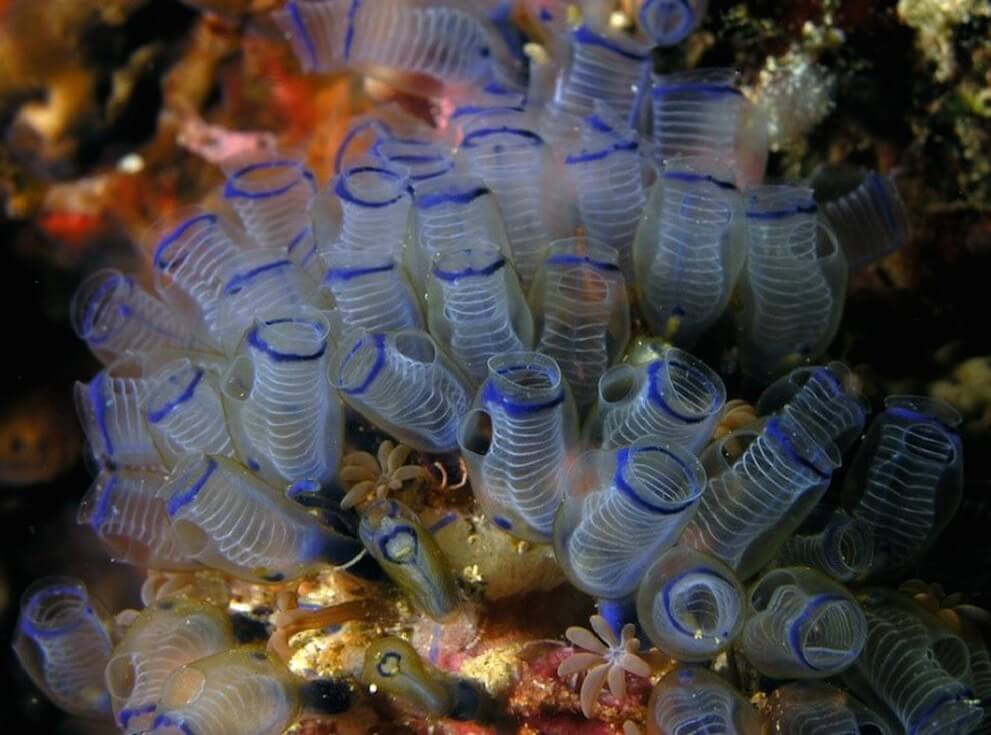- Researchers recently described a new fossil species of tunicate called Megasiphon Thylacos.
- The Megasiphon Thylacos fossil is about 500 million years old.
- The discovery suggests that the modern tunicate body plan was established shortly after the Cambrian explosion.
- The fossil provides insight into the sedentary, filter-feeding lifestyle of ancestral tunicates and their metamorphosis from tadpole-like larvae.
Tunicates
- Tunicates, commonly known as sea squirts, are a group of marine animals.
- They spend most of their lives attached to surfaces such as docks, rocks or the bottom of a boat.
- There are about 3,000 species of tunicates in the world’s oceans, mainly in shallow water habitats.
- The evolutionary history of tunicates dates back at least 500 million years.

